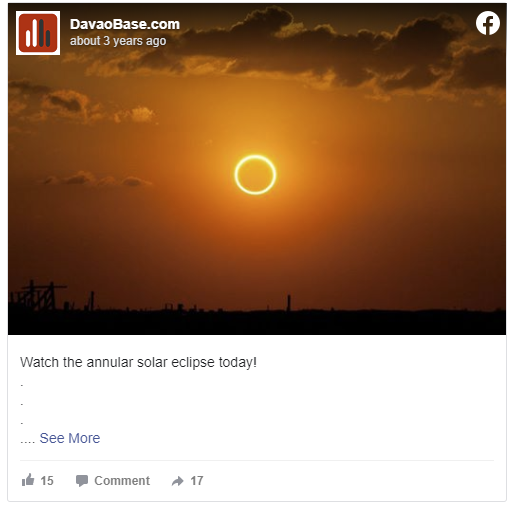Get Ready Because There Will Be Both A Solar and Lunar Eclipse In June
- Healthy Life
- May 31, 2020
- 2 min read

During these challenging times, people have turned to nature to source pleasure and positivity.
Among all the bad news related to the coronavirus pandemic, we are here to inform you that you can get prepared for some pretty amazing shows in the sky!
Skywatchers, in less than a week, you’ll witness several spectacles in a row- a partial Penumbral Lunar Eclipse on June 5th and 6th and an Annular Solar Eclipse on June 21st!
This year, we’ll be able to marvel at six eclipses in total, four Lunar, which will all be partial, and two Solar, an Annual Eclipse on June 21st and a Total Eclipse on December 14th.
An eclipse happens when the light from one celestial body is obstructed by another, as the body in between the two casts a shadow on the third body.
When the light of the Sun is blocked by the Moon we observe a solar eclipse on Earth, and when Earth is aligned between the Sun and the Moon, it casts a shadow on the Moon, we witness a lunar eclipse.
About 35% of all lunar eclipses are penumbral, 30% partial, and 35% are total. They can be observed with bare eyes safely, so they are a treat for sky gazers!
Penumbral Lunar Eclipse occurs when the Moon lies in the penumbral, or outer shadow, of the Earth, and it can be quite subtle.
The one we are about to observe will be visible from much of Asia, Europe, Antarctica, Africa, Australia, and South America’s southwest. It will start on the 5th of June at UTC 17:45:51, reach its peak at 19:24:55, and end at 19:24:55.

Solar eclipses can be of four types, Total, Partial, Annular, and Hybrid. NASA explains that they occur once every 18 months, and they provide a perfect opportunity for them to study the Sun’s corona, its top layer.
On the 21st of June, the Moon will be perfectly aligned between the Sun and Earth for the Annular Solar Eclipse, and the outer ring of the sun will remain visible, called the ‘ring of fire’. The full Solar eclipse will be visible from parts of Africa, and partial views in South/East Europe, much of Asia and Africa, North in Australia and the Pacific and Indian Oceans.
The eclipse will peak at UTC 12:10 am, and it will last for 3 hours, 18 minutes.
These events should remain special memories, so don’t forget to protect your eyes. Don’t look directly at the sun without protective, special-purpose solar filters.



Comments